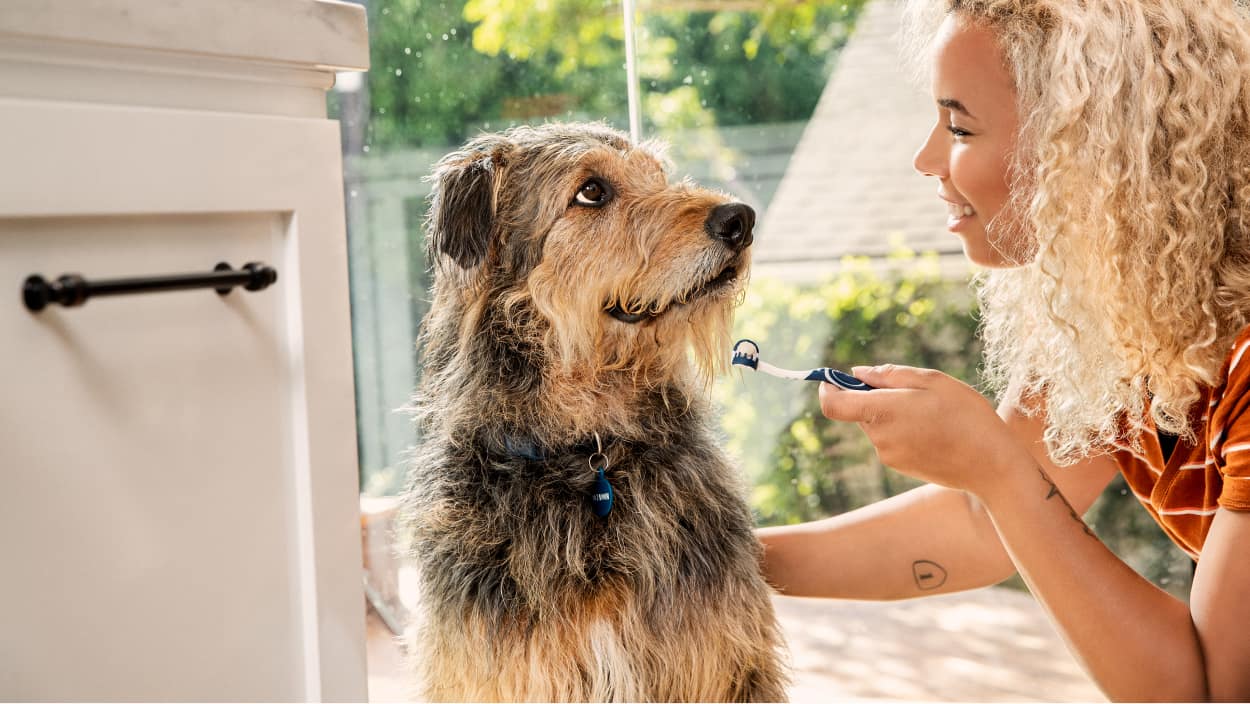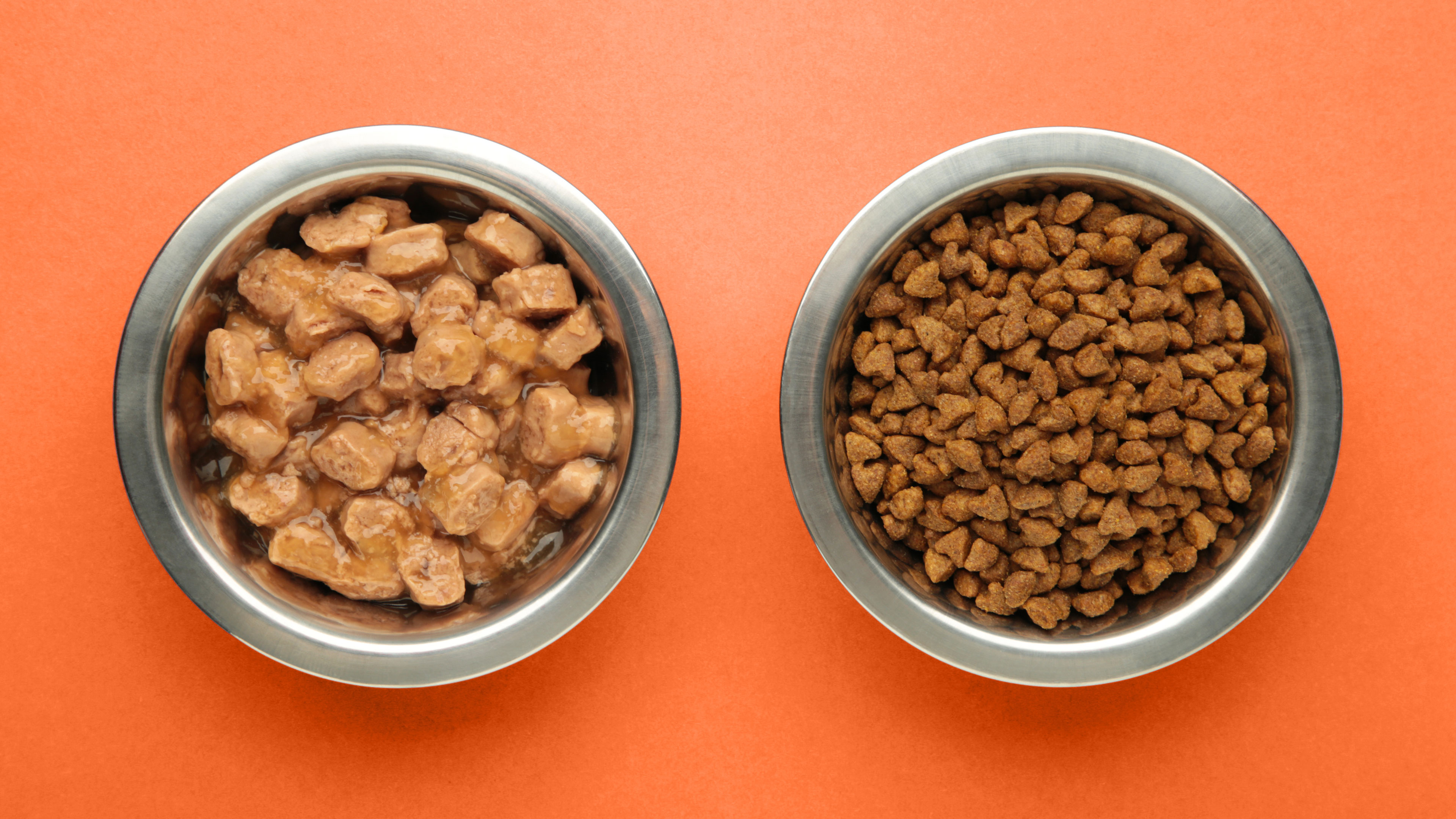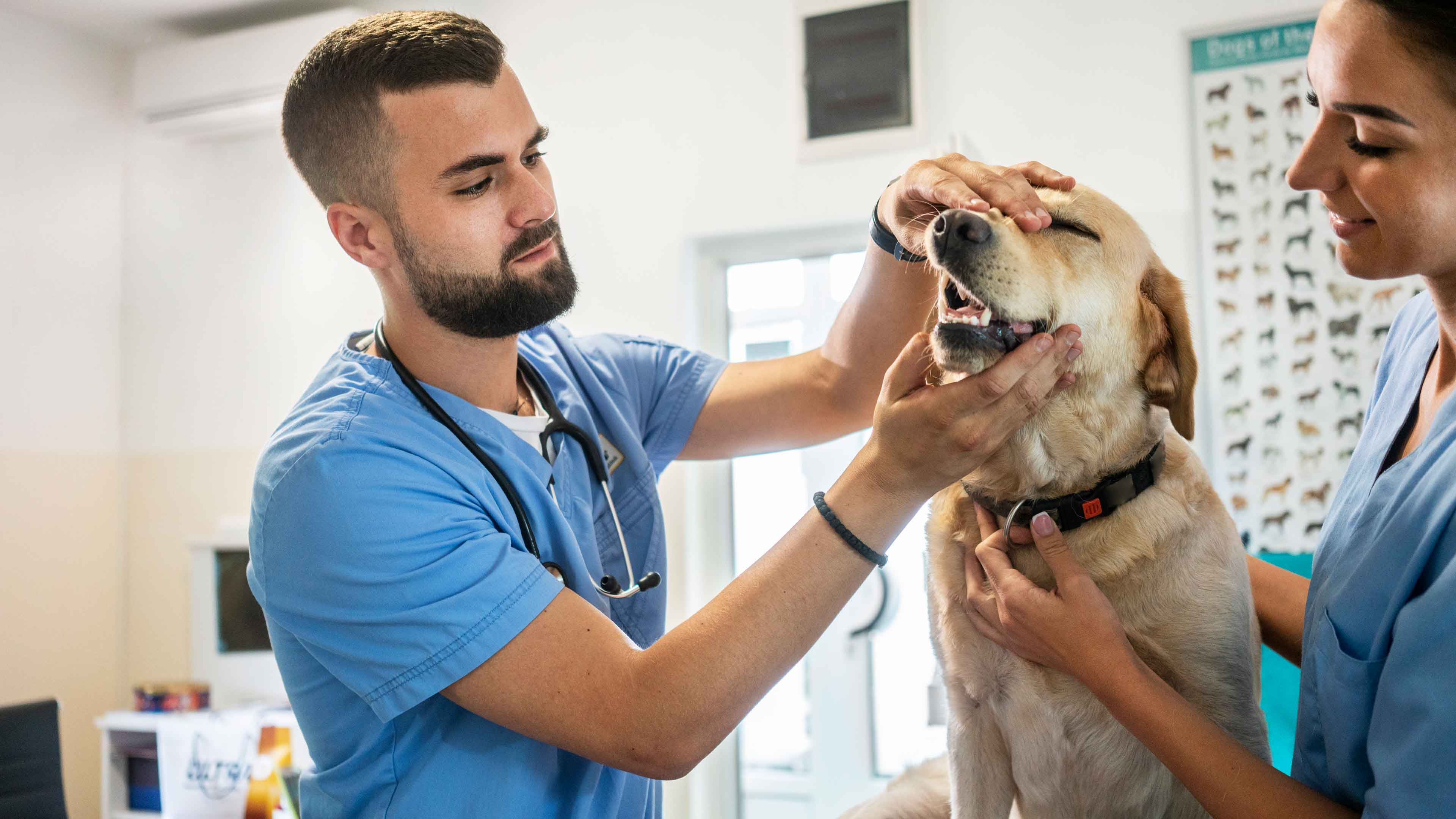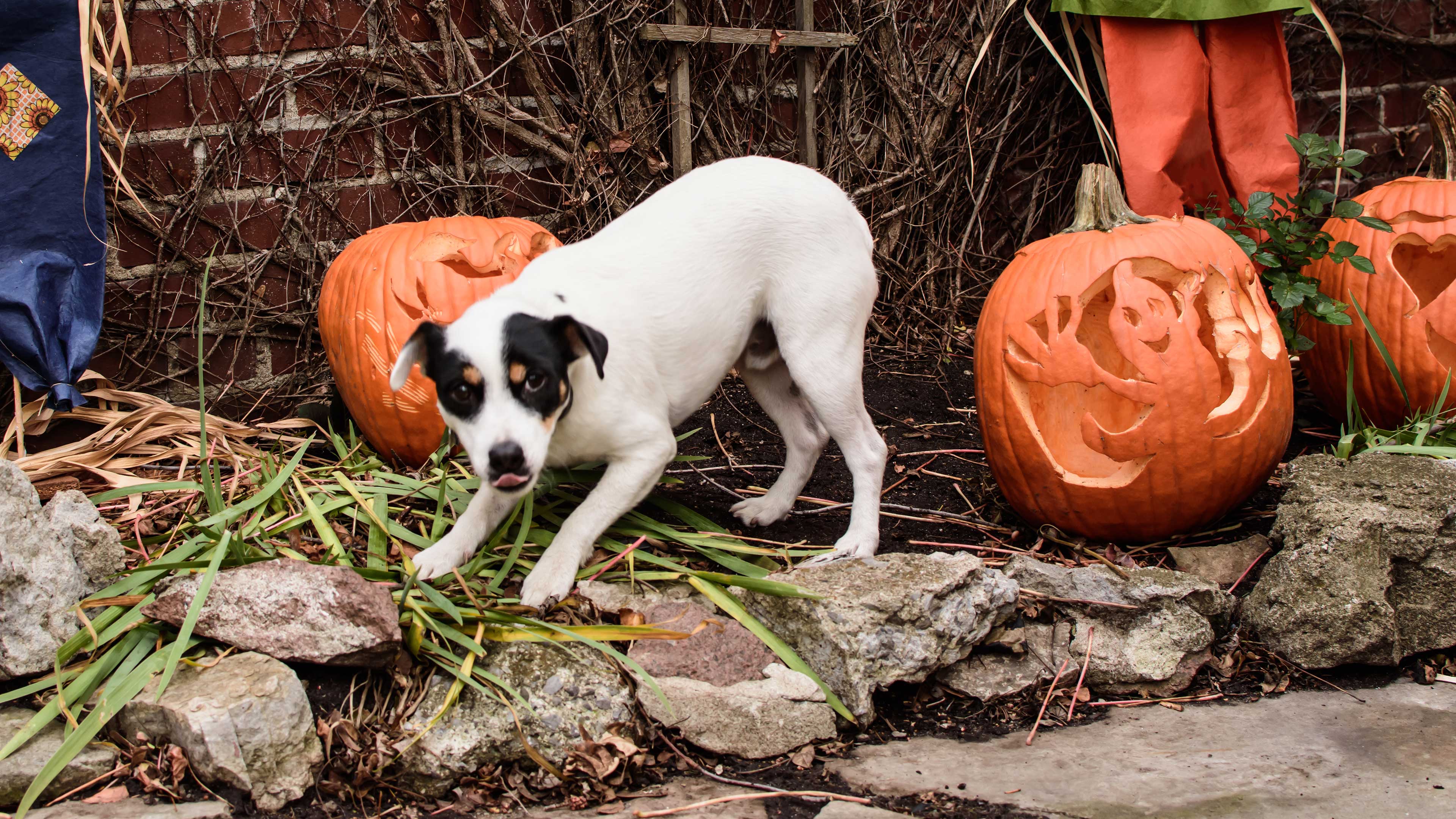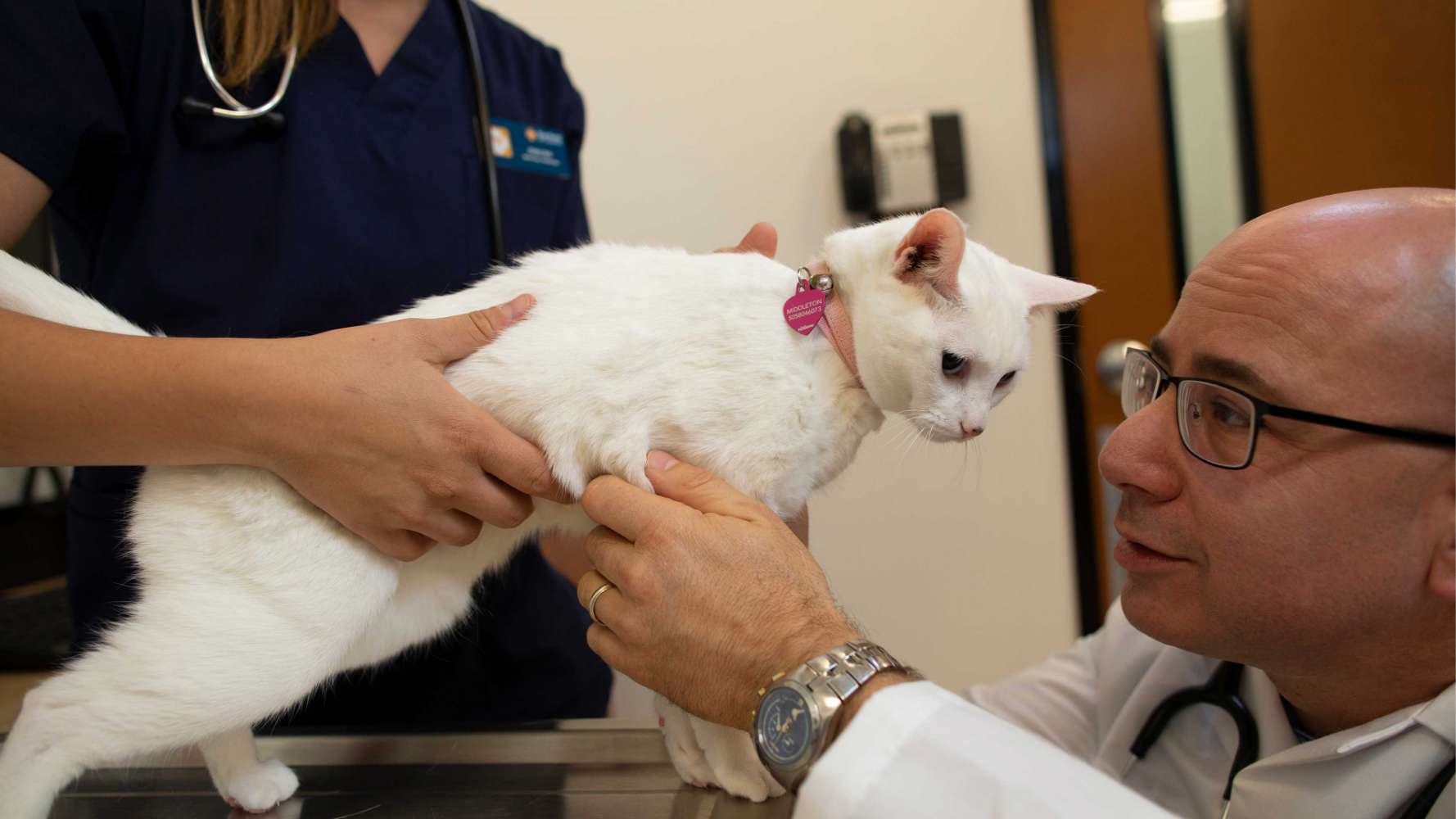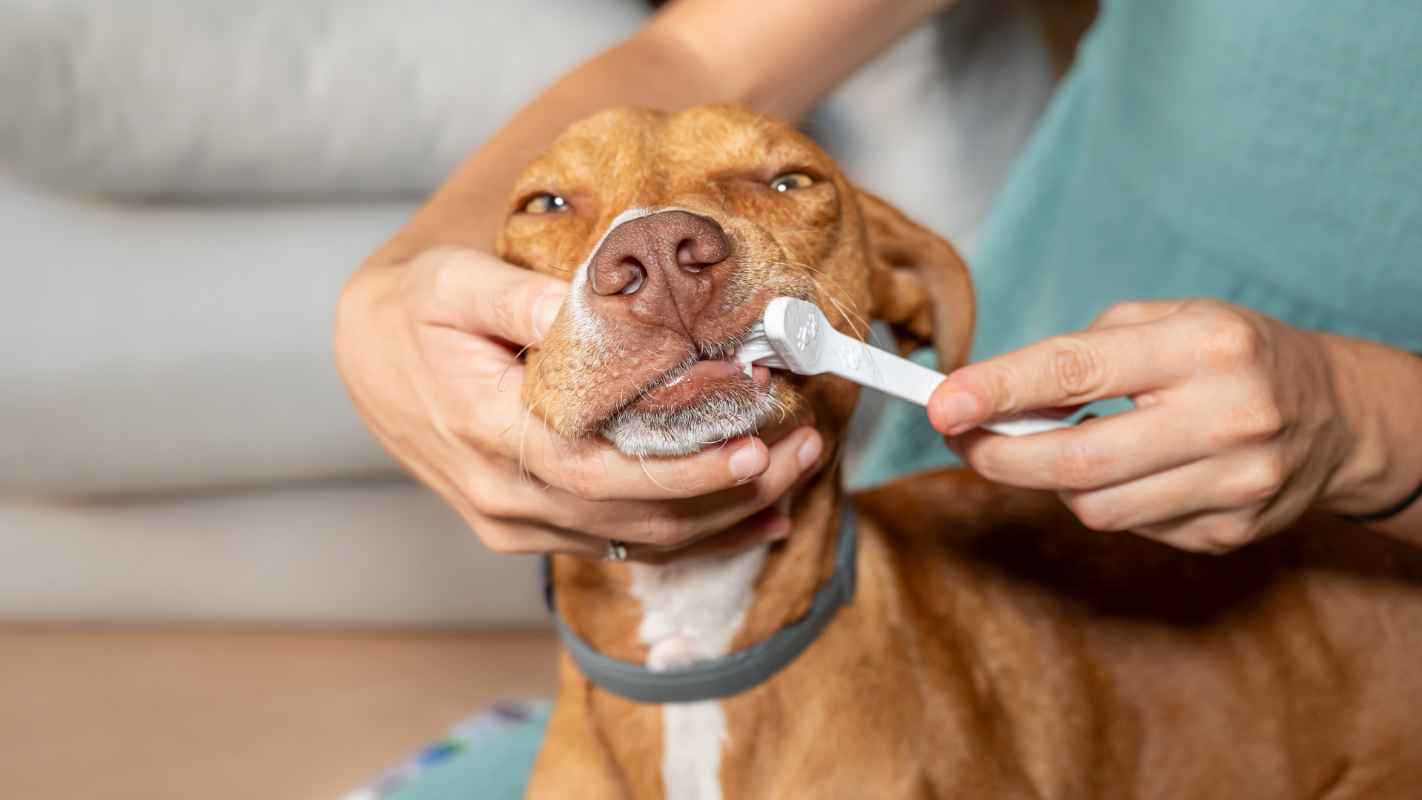Banfield's guide to pet dental care
Does your pet have super-stinky breath? It could be their gums.
Because pets can't brush, their teeth collect a funky plaque of bacteria, saliva, mucus, and food particles. This hardens into a crusty dental tartar that irritates the gums, often leading to full-blown gum disease, or periodontitis. The result? Discomfort, possible bone loss, and fantastically bad breath for your pet.
Unfortunately, more than 75% of dogs and almost 70% of cats develop signs of gum disease by the time they’re three. That’s awfully young for your furry friend to have crusty teeth and painful, swollen gums!
Luckily, there are things you can do to keep your pet’s gums, teeth, and mouth both fresh and healthy. You might even recognize some of them from your own dental routine.
Consistent oral hygiene care at home is hugely important – even more important than yearly cleanings.
Brush up at home
Brushing your dog's – or cat's – pearly whites daily is step #1.
First, you'll need to get your pet used to having their lips and teeth touched. We always suggest starting when they're puppies or kittens, but older animals can often be coaxed with enough patience and loving care.
Once your pet is cool with having your fingers in their mouth, you're ready to brush. Never use human toothpaste, which can be toxic to pets. Instead, use special pet toothpaste, which usually tastes like something your pet enjoys. Let your pet sniff and taste it to see how yummy it can be. Then, using a very soft toothbrush, a finger brush, or even gauze around your finger, use the paste to gently clean the outside of your pet's teeth. Don't worry – even if your pet finds brushing an overwhelming experience, your Banfield veterinary hospital can help.
And remember to be consistent. Daily brushing for a few months and then stopping will do nothing; brushing three times a week on a regular basis will do much more.
Treats for the teeth
Brushing is just the beginning. Depending on your pet’s needs, there are many ways to add better dental health to your routine:
- Dental treat chews can help keep bacteria from building up on teeth
- Special water additives can help reduce plaque
- Dental sprays, gels, wipes, and special diets are even more options
Talk to your vet team about the best treatment plan for you and your pet's tooth temperament.
Do get dental cleanings
Brushing and special tooth-helping treats are a huge help in keeping your pet's entire mouth healthy – and their breath less dire. But dental hygiene isn't complete without a yearly professional dental exam and teeth cleaning at the vet to ensure that the gunk is gone and their mouth, teeth, and jawbones are all in good shape.
Also recommended: Add preventive full-mouth dental X-rays to your pet's professional dental cleaning. These digital pictures are a great way to check for potential under-the-gum problems and catch painful tooth decay and dental disease before it can lead to other oral health and non-oral health issues. Plus, you can easily add this option to your pet's Optimum Wellness Plan® and include it in your monthly payments. Now is a great time to ping your veterinary team to see what they recommend.
Healthy teeth, healthy pet
Dental care is a big part of keeping any furry companion happy and healthy. So add regular brushing and a professional cleaning to your routine. Take a look into those loving eyes (and a whiff of that fresher breath) and we think you'll agree – it's worth it.
 Mites and mange
Mites and mange Podcast - Not Just Fluff
Podcast - Not Just Fluff
